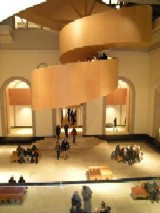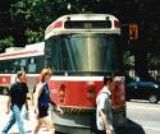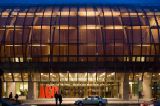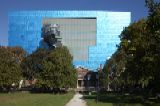|
Andrea Bertozzi, UCLA
Self-organization in human, biological, and articial systems.
I
will discuss recent work on self-organization in complex systems
with a focus on human and biological models as well as articial
systems. Specific case studies include (a) the formation of crime
hotspots in urban settings and the mechanisms that lead to such
behavior (b) collective motion of swarms, flocks, and schools
in animal populations and (c) cooperative control of robotic vehicles
using models motivated by biological examples. Such research problems
have led to interesting work and open problems for the mathematics
community, bringing together different research areas including
dynamical systems, stochastic processes, statistical sampling,
bifurcation theory, graph theory, and differential equations.
Helen
Byrne, University of Oxford
Discrete and continuous approaches to modelling vascular tumour
growth
By
the time that they are clinically detectable, most solid tumours
meet the abnormally high metabolic demands of their proliferating
cells by stimulating the formation of a new blood supply from
their host. This network of blood vessels typically forms over
a short time period and is usually abnormal, comprising vessels
that are highly tortuous, leaky and more compliant than their
normal counterparts. To exacerbate matters further, the distribution
of blood vessels within vascular tumours is often extremely heterogeneous
with respect to both space and time. For example, cells in regions
that are, at a given time, well-perfused will be nutrient-rich
and proliferate rapidly. The associated increase in cell number
increases the mechanical load on the compliant vessels which will
collapse, halting the blood supply to the region and starving
the cells of vital nutrients unless they can stimulate the ingrowth
of new blood vessels before they die. The complexity of vascular
tumours creates significant therapeutic challenges, including
deliver cytotoxic drugs to the tumour cells.
When faced with such complexity, it is difficult to know what
mathematical approach should be used to model vascular tumour
growth. Continuum models, based on mixture theory, provide a coarse-grained
description of the tumour's size and composition that is consistent
with imaging modalities such as MRI. By contrast, multiscale models
permit investigation of the interplay between subcellular, cellular
and tissue scale process. In this talk I will introduce each approach,
explain the complementary insight that they can provide and discuss
techniques for investigating their inter-relationships. I will
also explain the approaches we are using to validate the models
against experimental data.
Theodore
Kim, Media Arts and Technology Program,
University of California, Santa Barbara
Subspace Simulation of Non-linear Materials
Everyday
materials such as biological tissue exhibit geometric and constitutive
non-linearities which are crucial in applications such as surgical
simulation and realistic human animation. However, these same
non-linearities also make efficient finite element simulation
difficult, as computing non-linear forces and their Jacobians
can be computationally intensive. Reduced order methods, which
limit simulations to a low-dimensional subspace, have the potential
to accelerate these simulations by orders of magnitude. In this
talk, I will describe a subspace method we have developed that
efficiently computes all the necessary non-linear quantities by
evaluating them at a discrete set of "cubature" points,
an online integration method that can accelerate simulations even
when the subspace is not known a priori, and a domain decomposition
method that efficiently adds deformations to discretely partitioned,
articulated simulations. Using our methods, we have observed speedups
of one to four orders of magnitude.
Dilip
Madan, University of Maryland
Jointly
modeling three option surfaces, for an ADR, its local underlying
stock and the exchange rate.
We apply the quadratic skew normal model with an underlying Bhattacharyya
Density to jointly model the local stock and the exchange rate
for the US dollar quoted in the local currency. Arbitrage free
considerations are shown to imply a model for options on the stock's
ADR. All three surfaces are simultaneously calibrated. Applications
include the design of trades illustrated for VALE- BRL, UBS-CHF,
BARCLAY-GBP, and SANTANDER-EUR.
Edriss
S. Titi,
University of California and Weizmann Institute
Recent Progress Regarding the Navier-Stokes, Euler and Related
Geophysical
Equations
In
this talk I will survey the status of, and the most recent advances
concerning, the questions of global regularity of solutions to
the three-dimensional Navier-Stokes and Euler equations of incompressible
fluids. Furthermore, I will also present recent global regularity
results concerning certain three-dimensional geophysical flows,
including the three-dimensional viscous ”primitive equations”
of oceanic and atmospheric dynamics.
back to top
|











